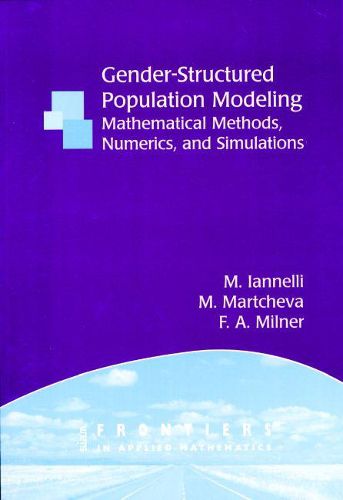Readings Newsletter
Become a Readings Member to make your shopping experience even easier.
Sign in or sign up for free!
You’re not far away from qualifying for FREE standard shipping within Australia
You’ve qualified for FREE standard shipping within Australia
The cart is loading…






Gender-Structured Population Modeling: Mathematical Methods, Numerics, and Simulations gives a unified presentation of and mathematical framework for modeling population growth by couple formation. It provides an overview of both past and present modeling results. The authors focus on pair formation (marriage) and two-sex models with different forms of the marriage function the basis of couple formation and discuss which of these forms might make a better choice for a particular population (the United States). The book also provides results on model analysis, gives an up-to-date review of mathematical demography, discusses numerical methods, and puts deterministic modeling of human populations into historical perspective. The authors describe several models and derive the theoretical results that demonstrate the validity of these models. The numerical methods for approximating the solutions of the differential models the equivalent of creating discrete simulators are delineated. Simulation results are compared with actual demographic data to show some of the difficulties concerning the availability of data and to show that mathematical demography provides reasonable qualitative and quantitative estimates. The models in this book can be applied to different sets of data.
$9.00 standard shipping within Australia
FREE standard shipping within Australia for orders over $100.00
Express & International shipping calculated at checkout
Gender-Structured Population Modeling: Mathematical Methods, Numerics, and Simulations gives a unified presentation of and mathematical framework for modeling population growth by couple formation. It provides an overview of both past and present modeling results. The authors focus on pair formation (marriage) and two-sex models with different forms of the marriage function the basis of couple formation and discuss which of these forms might make a better choice for a particular population (the United States). The book also provides results on model analysis, gives an up-to-date review of mathematical demography, discusses numerical methods, and puts deterministic modeling of human populations into historical perspective. The authors describe several models and derive the theoretical results that demonstrate the validity of these models. The numerical methods for approximating the solutions of the differential models the equivalent of creating discrete simulators are delineated. Simulation results are compared with actual demographic data to show some of the difficulties concerning the availability of data and to show that mathematical demography provides reasonable qualitative and quantitative estimates. The models in this book can be applied to different sets of data.